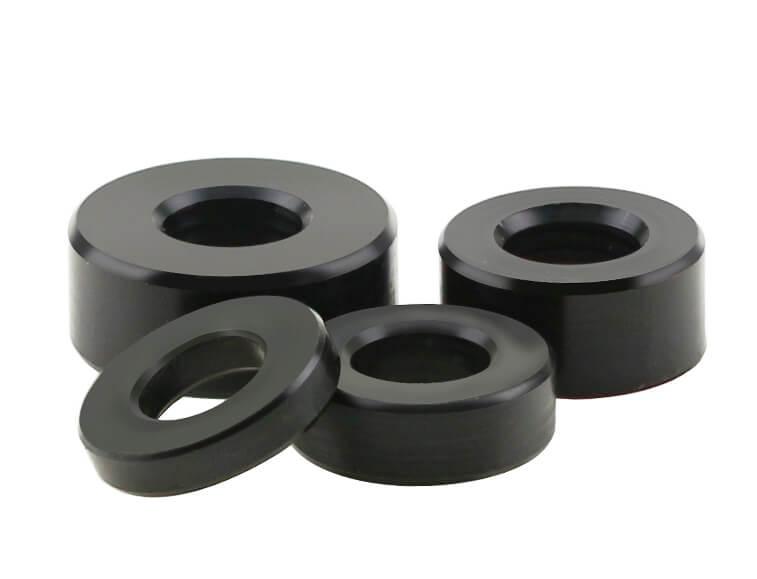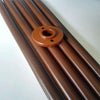POM, which stands for polyoxymethylene, is a high performing engineering thermoplastic that belongs to a group known as acetal plastics. With its high strength, rigidity and durability, POM plastic is ideal for mechanical parts which require tight dimensional tolerances across a wide range of applications.
🎉🎉🎉Limited Time Offer Use code: QR4GNY08SHVR at checkout and enjoy a special discount on your entire order! 👉 POM plastic
Also known by its common brand names Delrin and Celcon, POM acetal resin first came into commercial production in the 1950s as an alternative to metal parts in the emerging plastics industry. Since then, continuous innovation and development has led to improved POM material grades and properties to suit modern manufacturing needs.
This article provides a complete overview of POM plastic - its properties, production, grades and usage across various industries. We’ll also compare POM to other thermoplastics to give you a perspective of where acetal plastics fit among today’s high performance engineering materials.

Key Properties and Characteristics of POM Plastic
So what makes POM such a versatile engineering plastic? Here are some of the standout material properties and characteristics:
High Stiffness and Hardness
POM plastic possesses high rigidity and hardness similar to die-cast metals, despite its low specific gravity. The stiffness of POM acetal resin allows it to maintain shape even under high loads.
Excellent Dimensional Stability
A POM part can hold its precise dimensions extremely well throughout its lifespan even in fluctuating temperatures. This gives POM an edge for parts which need to maintain tight tolerances.
Low Coefficient of Friction
The slippery surface of POM plastic results in low friction against other surfaces. This self-lubricating behavior also provides high abrasion and wear resistance.
Good Chemical Resistance
POM offers relatively good resistance to a wide range of organic solvents, fuels, oils and greases. It has better chemical stability than most other plastics.
High Mechanical Strength
POM plastic possesses high tensile strength, flexural strength and impact strength for an unfilled thermoplastic. This allows POM parts to withstand high mechanical loads.

POM Plastic Grades and Variants
POM acetal resin comes in a variety of grades and structural modifications to suit different applications:
Unfilled POM
The pure polymer without any fillers or reinforcements. Provides optimal machinability, low friction and high impact strength.
Glass Fiber Reinforced POM
Contains up to 40% glass fiber which improves tensile strength, rigidity, dimensional stability and thermal resistance.
Lubricated POM
Contains internal lubricants which enhance machinability and lower friction. Used for sliding components.
Copolymer POM
Copolymerization with other monomers improves thermal stability and impact resistance compared to homopolymer POM.
Conductive POM
Contains conductive fillers like carbon fibers or carbon black to dissipate electrostatic charges. Used in electronics applications.

How Does POM Stack Up Against Other Engineering Thermoplastics?
POM plastic offers some distinct advantages over other popular engineering thermoplastics like nylon, PTFE and basic acetal:
POM vs Nylon
- POM has lower water absorption than nylon, retaining better dimensional stability in humid environments.
- POM also handles oils and solvents much better than moisture-sensitive nylons.

POM vs PTFE (Teflon)
- POM is easier to machine than PTFE due to its lower abrasiveness.
- POM plastic is also more economical compared to premium-priced PTFE.
POM vs Unfilled Acetal
- POM has higher tensile strength, hardness and rigidity owing to its higher crystallinity.
- POM shows better creep resistance and stability under load than basic acetal plastic.
So POM strikes an optimal balance of mechanical properties, chemical resistance, machinability and cost-effectiveness unmatched by other thermoplastics.
Where is POM Plastic Used? - Overview of Applications
The unique benefits of POM acetal plastic make it a highly versatile material suitable for the following applications:
Gears
POM is widely used for small to medium sized gears across industries like automotive, business machines and consumer appliances.
Rollers and Wheels
The high wear resistance of POM is ideal for rollers and wheels which need to glide smoothly under high loads.
Bearings
POM bearings provide smooth running motion while retaining lubricants well. The dimensional stability of POM allows precise bearing fits.
Food Processing Equipment
POM meets FDA regulations for repeated food contact. It resists moisture, oils and cleaning chemicals used in food processing.
Automotive Parts
POM is used for small precison parts in automobile interiors and under-the-hood components that are exposed to fuels and oils.
Electrical Housings and Connectors
With its electrical insulation properties, POM is suitable for casings, connectors and plugs that house sensitive electronics.
Medical Devices
POM acetal is used in medical devices like respirators, autoclaves and nebulizers that demand durability, precision and chemical resistance.

POM plastic has carved a niche in high-performance applications where its distinctive balance of mechanical and chemical properties outperforms other thermoplastics.
With its high strength, excellent dimensional stability and good chemical resistance, POM offers valuable properties unmatched by other plastics. POM plastic has become a popular choice for small, high-precision parts across industrial, automotive and medical applications.
The various grades of POM make it adaptable for different requirements - from low friction to high temperatures. Continued innovation in POM plastic technology will open up new possibilities for this versatile engineering thermoplastic.







